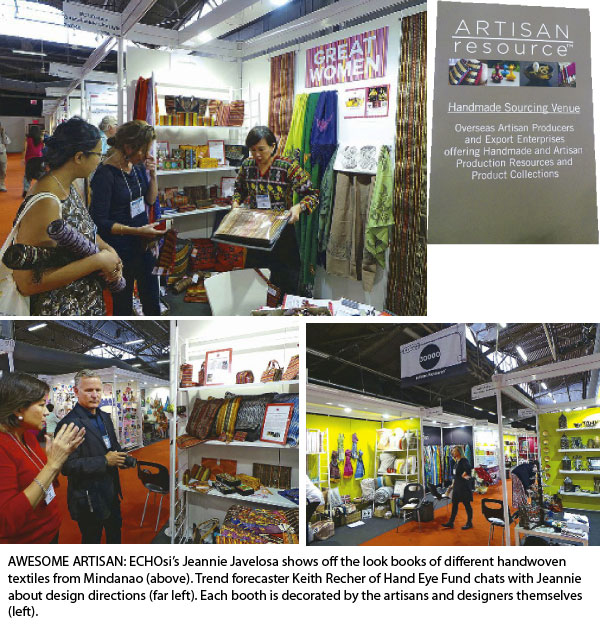Selling handmade to the world
MANILA, Philippines - It used to be that one could only export if one had scale. So in our development work, scaling up is always the challenge. “Produce more,” small producers are told by exporters. “Bring it to scaleable levels,” communities are encouraged. “Economies of scale is key,” we are told in business school.
The artisan, the handmade producer, never gets to scale up. So she never gets to market. Because that is the way of the world. Or it was.
Today, niche markets are looking for just the opposite. Handmade products now have a space in the global market. But each product must have a story.
Research has shown that women hold 80 percent of purchase decisions in America. American women, since the findings were published, are making a conscious choice to buy from the world’s weavers and hat makers, but not just for the special story that comes with each handmade article. It also makes a consumer feel good that she is helping a sister in Africa or in Asia.
The handmade articles get a price premium which similar mass-produced articles will never get. There now is a strong desire in consumers to buy the cause, the story, the whole “feel good” effect of buying premium for gift items and other everyday accessories such as scarves, shawls and handbags.
We went to such a specialty trade show called Artisan Resource as part of the big gift and lifestyle show called NYNow. At this show, handmade is the requirement. And prices were pretty much arbitrary. It was not about cost of material and cost of labor. Rather, products were priced depending on fair trade practices – that the producer got a fair wage and that the seller’s costs were covered, while leaving enough room for other costs of the buyer, and still being able to get to a fair retail price.
Technology, through B2B platforms and B2C arrangements, helps in bringing costs down while giving producers a fair value for their handiwork.
Online stores and catalogues have replaced the usual distributors. Ironically, but happily, technology has brought the small artisan to the global market.
And this is where ECHOsi foundation and the Great Women brand are headed. When we could not get scale from our producers, we knew there was another solution. Make them the way cultural communities did. One by one. Piece by piece. And each original creation actually commands a higher value or a higher return, both for the maker and the seller.
Today, there are wholesalers in the “new world order” like Etsy Wholesale who displays the wholesale and suggested retail prices (SRP) when these used to be kept under wraps. Etsy also showcases the maker, the producer complete with photo and contact details. Transparency is the new world order. No more secret deals.
And it is this new way of doing business that allows us to bring our handmade products to global markets. Veracity... telling the true story of the artisan. Transparency... showing our costs and selling prices.
So there is a new hope for our small producers, especially of bags, weaves and crafts. We do not have to produce substandard products just to compete in price. The world is looking for something more precious, more valuable – and in a fair and transparent manner.
Designers are looking at working with artisans to put a new spin to some techniques whilst incorporating design features to go with trends. There are trend forecasters and trend watchers for fashion items, food flavors and other consumer preferences.
Artisans of the world, listen up. Stick to your age-old traditions. No shortcuts. Do it like you had all the time in the world. The market is now ready for handmade. Because each consumer is looking for a better product and a better value even as he or she spends more for it.
Next stop for niche markets are several other shows concentrating on tribal or folk art. Yes, we have value for handmade and for culturally-appropriate products. And the world is looking for these products – now!
- Latest
- Trending
















